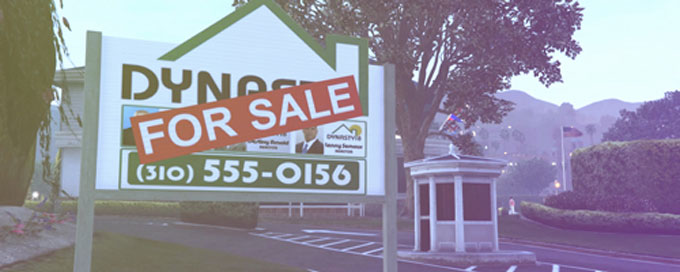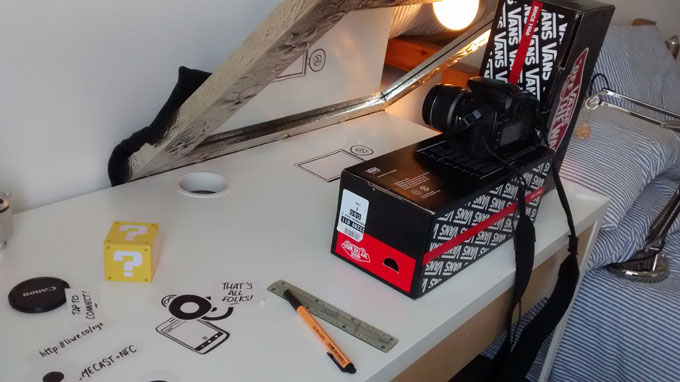18 October 2015

Last night, while playing GTA with my flatmate, an idea came to our minds. A silly idea like we all have between friends.
It came after ordering pizzas (they got bad influence on us), we were imaging that we could order them directly from GTA. That our local pizza shop would be in the game, you enter, choose what you want, pay, then get it in real. This could be possible if Rockstar Games would create a marketplace to rent some places in the game. An API would allow to customise the design of the shop and interaction with the user. This could be even better if you have to do a special challenge to get an exclusive topping on your pizza.
Some places would be rentable for players from a specific region, like renting a shop only for players from London. It would target a restricted user market.
Then, we’ve been wondering what would happen if you do a hold-up? Does it count like a hold-up IRL? I imagine some tenant going mad because they were ignoring the possibility. So to respond to the problem, Rockstar would provide a bodyguard and private security services that you need to buy to protect your business. Otherwise you would see Dominos gang planning to blow up Papa Johns.
Or maybe this already exists and I’m out of date (as usual).
permalink
12 October 2015
For my last post I did something I wanted to do in ages: stop motion. But I had nothing to hold my camera in the air and take pictures of my desk. This problem always blocked me to go further. Then I remembered about these old arcade games which are using a mirror inside: “Oh! There’s something to try”. It ended with the following set up.

A big mirror, hold by a Vans box and covered with a T-Shirt to not damage the wall. Then another box to put the camera a bit up. A bit of light, and we are good to go.
It’s not really complex, and I’m quite happy of the result for a first try. There’s some things I’ve learn and some I will do differently next time.
- Be sure the mirror angle is 45 degrees. Otherwise your picture will have a bit of perspective.
- Use a remote for your camera. The risk to move during the shoot is too high, and retake a scene is not fun.
- Define the exposure and don’t change it. I made the silly mistake to leave it on automatic, which caused blinking effect.
- Better light. I thought the day light with my lamp would be enough.
- Use gel to stick element to the table, but remember to clean the marks for the next take.
- Use thick paper, mine was too thin.
- Prepare your storyboard
- Avoid stacking elements, it’s a mess to move. Like the smartphone in the last part, the screen is another element. Every time I was moving the phone, the screen was going away, I should have make another smartphone with this screen.
There will be another attempt, for sure.
permalink
10 October 2015
The new version of the Chromecast is launched. I was already in love with the existing version and it’s JavaScript API. Even if the new one got nothing new, his new design gave me a little idea. A little feature they should implement to give more possibilities and usages to the famous device: add the NFC support.
What for? Which case?
Well, the problem is most of people (and devs) think the Chromecast is only for streaming audio and video. This is incomplete, it display web apps, which is a lot more exciting.
Imagine a big TV in a store, you can’t interact with it. With a Chromecast you can display a web app, add Liwe on the top of it and anybody with a smartphone can control it. Your app could help your customers to find what they are looking for, discovering new products or any other experience.
But imagine one second the NFC was supported and controllable via JavaScript in the web app. This would transform the little device into a direct access point to a product page or the web app remote. A simple tap on the Chromecast you get the access to the information
After invading living rooms, it could invade a lot more new places like store, events or corporate world.
I took the opportunity to illistrate it in stopmotion. That was pretty fun to do.
UPDATE
This post has been on HackerNews for few hours and some interesting ideas came out from the comments. Mentionning the usage of QR code, the physical web or Google Tone. Unfortunately none of them can have an impact nowadays.
The QR code is widely popular but not a lot of people use it. An extra app is required to read the tag and the time required to write a simple url can be shorter.
The Google Tone and near web are absolutely amazing but not implemented yet. On the top of it, the Chromecast would need bluetooth and an access via their API which not currently the case… like NFC.
Actually, about the NFC, a reader (ron0c) mention a point from iFixit teardown that a chip has NFC built in… maybe in a future update :)
permalink
04 October 2015
Once again, I have to be french and complain again, sorry.
WebRTC, by definition, is amazing. It allow you to establish connections between browsers and have peer to peer connections. So after a little issue with my personal project Liwe (Rackspace crashed my server, impossible for them to restore it, so I moved to OpenShift which is free) I decided to start to implement WebRTC to it. I had to discover the API, which I was expecting more difficult, but still not that easy.
To establish a RTC connection here is the process:
- Browser A generate an offer
- Browser A send the offer to browser B via your server/infrastructure (it’s called signaling)
- Browser B set the offer and generate an answer
- Browser B send the answer to Browser A via your server/infrastructure again
- Browser A set the answer
- Connection establish, let’s go partying.
There’s something I hate in this procedure: why we need to reuse signaling to send the answer to the browser A while we could use the information from the offer to establish the connection.
This force us to have a persistant connection between the browser A and the signaling server. Otherwise we could use a simple RESTful API to connect browsers. There’s always a first which create the entry point, then the second computer would just need to grab the offer to make a connection.
Or I’m completely wrong. I wish I am completely wrong.
permalink
01 October 2015
Many times in my life some friends asked me that question because they want to discover and learn coding. It’s not easy because you want to give them something which is interesting enough to understand the basics but you also need to find the good way, the good tutorial or interactive website. It’s tempting to give them the language you like but might not be easy for them. So, for a long time I mentioned trytuby.org. This website is really well made, and the team behind it did a very good job. Even if I know nothing about Ruby.
However, with time I met a lot of developers, a lot of people with different experiences. Some of them were pure geniuses who started to code at a very young age. It made me wonder why I didn’t start coding while I was a kid. Ok, the access to the knowledge wasn’t as easy as today with internet. But even later at teen age with an internet access something was missing. It wasn’t the motivation, or hardware requirements, but understanding the tutorial language.
This particular point made me realise one thing: the first language to learn to start coding is English.
It’s the sad reality, but understanding english give you access to the entire world of developers. Nowadays, everything is on internet, this where things happen, where the community is and grow. It became obvious for us (:developers) because we live with it every day, but try to code without knowing english: bye (most of) documentations, bye stackoverflow, bye communication with (the majority of) other developers.. [I can see coming people mentioning Google translate. Let me tell you “no”. It helps for a small sentence, not an entire documentation.]
Some projects got as fundamentals to translate make their product available in every language, like Ubuntu. But their code documentation remain in English. Only few projects translate their documentation, like Mozilla who does an amazing work with MDN.
Back in time, my first books were in french. The first one to learn C++ at age 14 was in french, the eBook “Pratique d’ActionScript 3” to learn AS3 was in french, then the website to learn PHP was “Le Site du Zero” which was the most popular french one. It’s no longer a problem for me, but when I try to motivate me nephew to code, the simple paragraph in english and I loose him.
There will always be ways to learn programming in any language, but if English is your mother tongue you start with good cards.
permalink
« newer
older »

